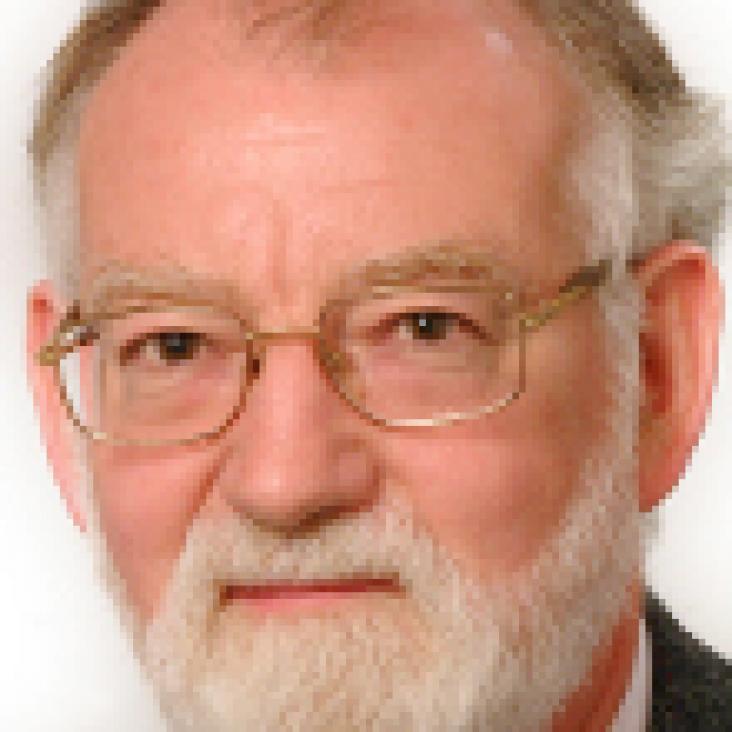Enumeration of states in a periodic glass
PHYSICAL REVIEW B 58:22 (1998) 14669-14672
Lightscattering from spinwaves in thin films and layered magnetic structures
NATO ADV SCI I E-APP 349 (1998) 215-238
Abstract:
The spinwave modes occurring in layered magnetic structures are discussed. Experimental examples obtained by means of light scattering are presented. Emphasis is put on coupled modes occurring in magnetic double layers, i.e. two ferromagnetic films, separated by a nonferromagnetic interlayer. The coupling can be via oscillating dipolar fields caused by the preccessing spins, or via the exchange interaction. It is shown, how the coupled modes can be used, to explore such interactions. These investigations have led to the discovery of the interlayer exchange interaction.Low dimensional quantum magnetism in the copper oxides
NATO ADV SCI I E-APP 349 (1998) 281-305
Abstract:
The magnetism of lamellar copper oxides, which are the parent materials of high temperature superconductors, is dominated by the spin 1/2 Cu+2 ions on the CuO2 planes. The magnetic behavior of these planes at high temperature is described well by the planar quantum Heisenberg antiferromagnetic (AFM) model, which has long range order only at T = 0. In fact they have three dimensional AFM order due to weak spin anisotropies and interplane couplings. Starting from a Hubbard model with spin orbit and Coulomb exchange couplings, we first derive an effective single-bond magnetic Hamiltonian which contains these anisotropies and couplings. Using a simple Coulomb interaction, as used by Moriya, reveals an interesting hidden symmetry which implies a rotationally symmetric interaction. For orthorhombic LCO, this symmetry is removed only when one adds the different bonds on the lattice, yielding a net Dzyaloshinskii-Moriya antisymmetric anisotropy. In tetragonal symmetry, the zero point quantum spin wave energy (QZPE) generates additional four-fold symmetry terms and delicate higher order interplane interactions, which help select a ground state among states which would otherwise be degenerate due to frustration. Adding several more interplanar interactions yields the full effective magnetic Hamiltonian, which is then used to identify the magnetic structures and competitions among them, leading to phase diagrams in parameter space. These are also used to discuss the critical phenomena which occur near various possible transitions. Specific attention will be devoted to the structures of tetragonal Sr2CuO2Cl2, Nd2CuO4 and Pr2CuO4. In the former, frustration among layers is lifted by pseudodipolar interactions and by QZPE. In the latter two, the rare earth also participates in the magnetism. Finally, we give full analysis of Sr2Cu3O4Cl2, which contains Cu3O4 planes with an extra Cu ion in the center of every second Cu plaquette. Each of the two types of Cu ions reaches AFM order separately and the system also exhibits an interesting ferromagnetic moment. A theory in which the intersublattice coupling is described by pseudodipolar Interactions allows us to deduce various coupling constants. Similarities in the relative Cu-O-Cu geometries enable us to relate these coupling constants to the nearest and next nearest neighbor interactions in many chain, ladder and lamellar cuprates. These have consequences concerning the magnetic behavior of the latter systems: competing nearest and next nearest neighbor couplings may explain the spin gap observed in the chains, and the new pseudodipolar interactions remove frustration in the interladder coupling.Low energy spin excitations in chromium metal
NATO ADV SCI I E-APP 349 (1998) 267-280
Abstract:
Neutron scattering experiments with full polarization analysis have been performed with a single crystal of chromium to study the low-energy spin fluctuations in the transverse spin density wave (TSDW) state. A number of remarkable results have been found. Inelastic scattering observed close to the TSDW satellite positions at (1+/-delta,0,0) does not behave as expected for magnon scattering. In particular, the scattering corresponds to almost equally strong magnetization fluctuations both parallel and perpendicular to the ordered moments of the TSDW phase. As the Neel temperature is approached from below, scattering at the commensurate wavevector(1,0,0) increases in intensity as a result of critical scattering at "silent" satellites (1,0,+/-delta) being included within the spectrometer resolution function. This effect, first observed by Sternlieb et al, does not account for all of the inelastic scattering around the (1,0,0) position, however. Rather, there are further collective excitations, apparently emanating from the TSDW satellites, which correspond to magnetic fluctuations parallel to the ordered TSDW moments. These branches have a group velocity that is close to that of (1,0,0) longitudinal acoustic (LA) phonons, but assigning their origin to magneto-elastic scattering raises other unanswered questions.Magnetic multiparticle systems and symbolic dynamics
NATO ADV SCI I E-APP 349 (1998) 317-342


